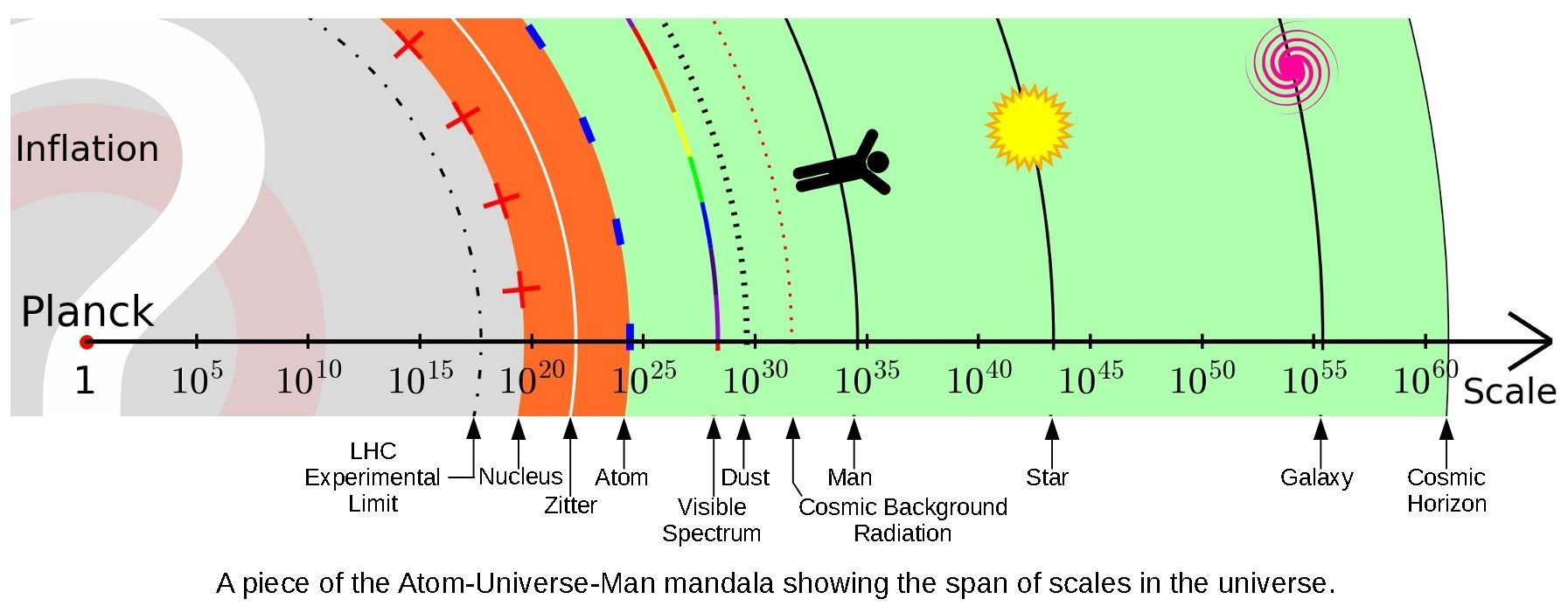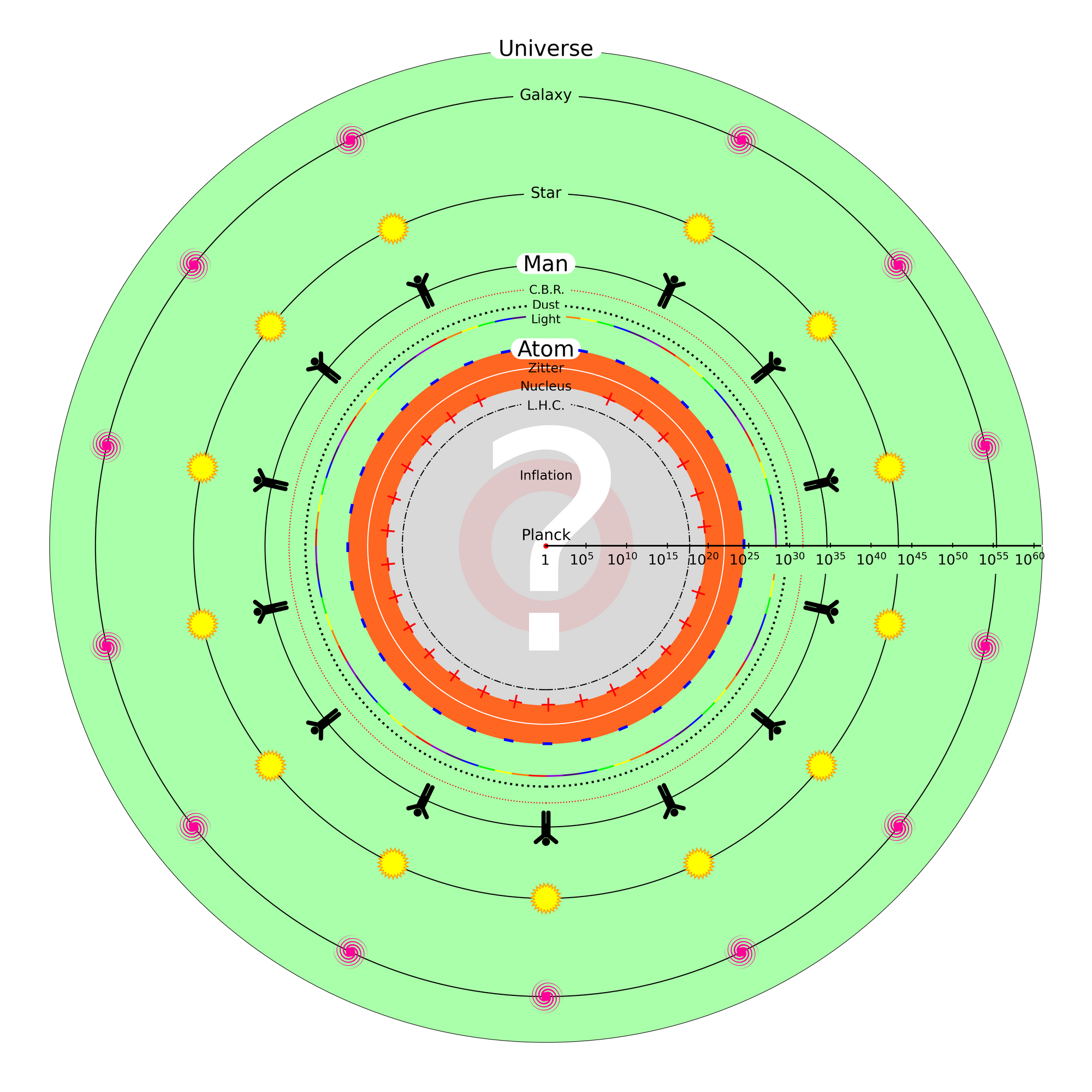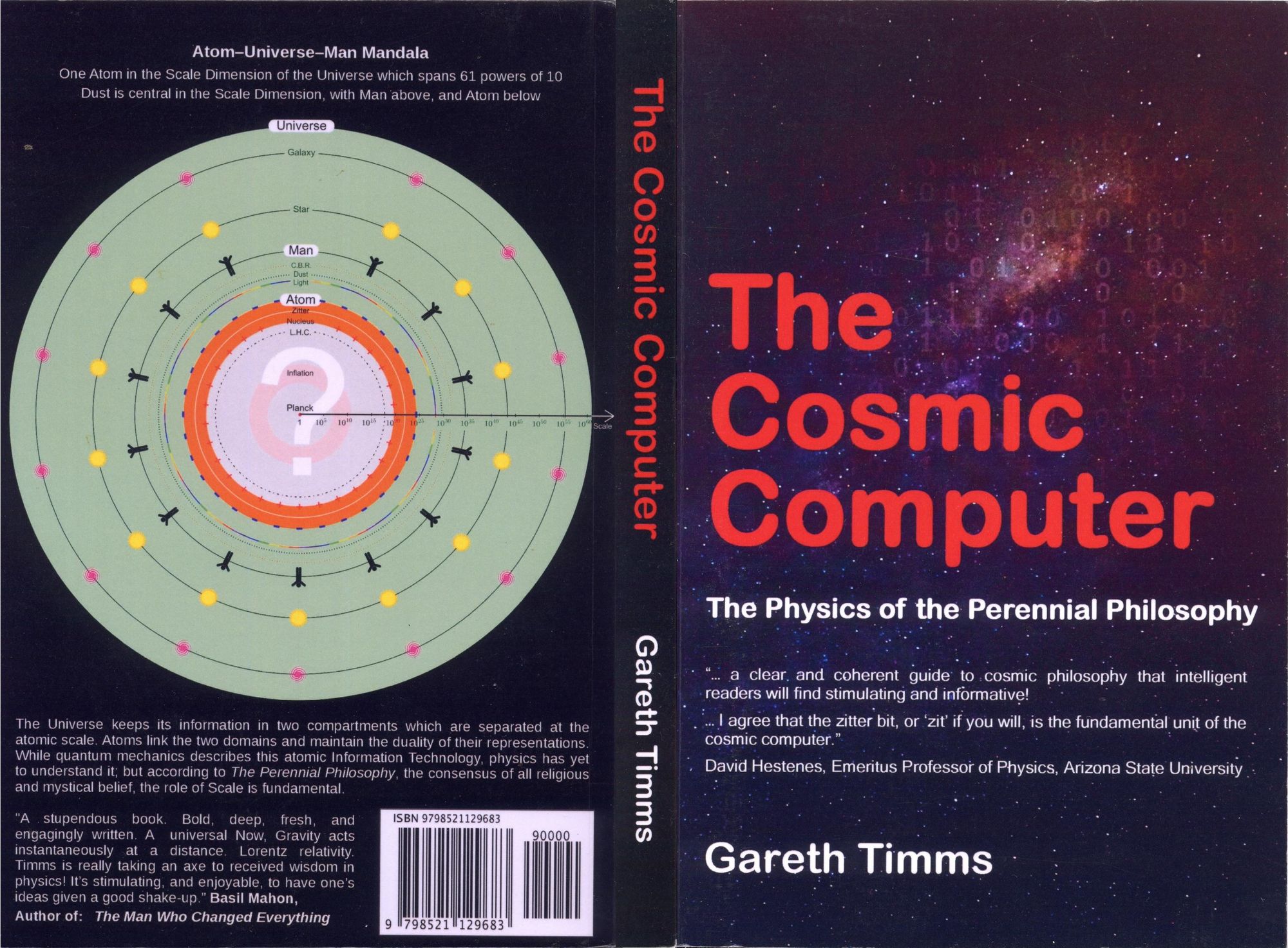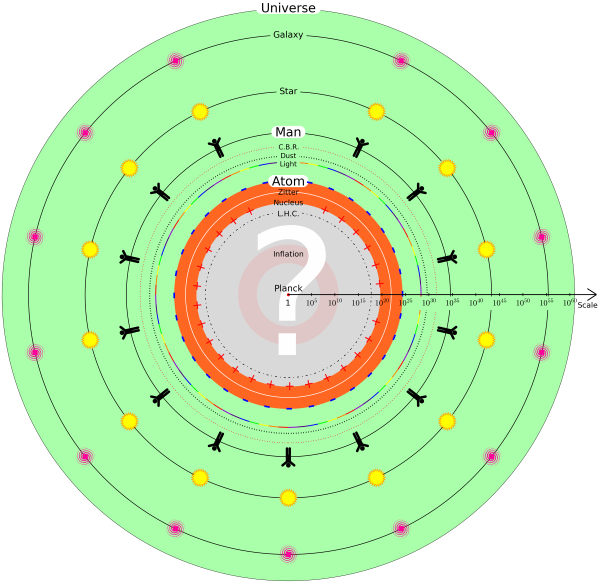The Cosmic Computer

Many people now believe that the Universe is a gigantic computer – a Cosmic Computer. In his book Programming the Universe, MIT physicist Seth Lloyd promoted this idea, and described the many insights that he and other researchers have found by regarding all the processes known to physics as forms of computation. One of the most startling of these is a result proved in a 1998 paper by Norman Margolus and Lev Levitin that relates energy directly to rate of computation. In effect, this now allows us to extend Einstein’s famous equivalence of energy and mass to include information processing, so we may now write:
E = mc2 = ops/sec (logic operations per second)
The exchange rate found by Margolus-Levitin is about 1051 ops/sec for each kilogram of mass – and yes, that is a 51 digit number! To find out how much computing is going on in a single hydrogen atom that weighs only 10-27 kg, we just have to multiply 1051 by 10-27 to get 1024 ops/second. This is still comfortably more than all the computers built by humans put together could muster. A typical laptop only manages about 1010 ops/sec, and a supercomputer just a few powers of 10 more. We may well ask what is all the internal processing of an atom for? After all, an atom is just an inert speck of matter isn’t it?
In my 2021 book, The Cosmic Computer, I presented a new interpretation physics that incorporates ideas from the Perennial Philosophy, the consensus view of spiritual leaders and mystics from all religions, to make sense not only of the computational Universe, but also of some of the many longstanding mysteries within physics. The Cosmic Computer may be regarded as an update for the information age of the holistic interpretation of quantum mechanics given by the physicist David Bohm in his 1980 book Wholeness and the Implicate Order, and in the 1993 book The Undivided Universe that he wrote with Basil Hiley.
While many physicists firmly reject any input from religious beliefs as unscientific, I agree with Einstein who, despite not being religious, still proclaimed: "Science without religion is lame, religion without science is blind". Provided that we incorporate scientific principles into our understanding of religion, as Aldous Huxley did in his great book The Perennnial Philosophy, we have a chance of not only curing the blindness of religion but also healing the lameness of physics.
A central idea in The Cosmic Computer is that the ancient Principle of Hermes, As Above So Below can be interpreted as a Duality of Information:
Nature keeps all the information that describes the physical Universe in two distinct domains that are separated in the dimension of pure scale by the layer of atoms. The information in each domain is equivalent, but encoded differently, and it is the power of computation inherent in atoms that keeps the totality synchronized. The combination of localized data of the outer world domain with the globalized data of the inner domain allows Nature to steer the most perfectly creative course in the evolution of the Universe.
You can download The Cosmic Computer as a pdf file for free, or order the paperback book from Amazon – follow the links below. While I have tried to get all the physics correct, there may be errors, so please email details of these and any other comments to: [email protected]. Subscription to this website is free, and will allow you to add comments on the posts page. Hopefully, some interesting suggestions and discussions may arise from this framework for understanding physics. When possible, I will add posts about where my recent researches are leading...
The AUM Mandala
I started representing the range of scales in the Universe by the image below some years ago – it is drawn using a logarithmic scale, and is a kind of cross-section through an atom that shows important features of the Universe. After realizing that it was helping to shift my own conscious understanding of the Universe, I now call it the Atom-Universe-Man mandala.

Many justifications for looking at the Universe in this way can be found in the full text of The Cosmic Computer, but here are a few for starters:
1) There is plenty of evidence in physics that space, as something you can mark a location in, does not exist below the nuclear scale of 10-15 metre, and there are no permanently existing mass-carrying particles below that scale that could act as location markers anyway.
2) The ‘space’ at the nuclear scale of 10-15 metre is already 1015, one million billion, times denser in mass-energy than ordinary matter made of atoms. This is not space as we know it, and it does not just exist inside an atomic nucleus, you need this extreme energy density to probe anything at all at these scales, hence our vast particle colliders like the LHC.
3) The big bang origin of the Universe has no location in space, one place is as good as another, why not at the centre of each mass-carrying particle? In fact, that is one way of thinking about the big bang, and it effectively privileges the dimension of scale.
4) Feynman specifically points out in his Lectures on Physics that while you can move an experiment at different speeds, and to different places, and get the same results, this is not true for changes of scale — the scale dimension is quite unlike the usual three dimensions of space.
5) Of the 4 forces known to physics, the Weak and Strong do not operate above the nuclear scale, so the outer world is run by just Electromagnetism and Gravity.
6) Quantum mechanical entanglement provides an instantaneous connection between particles that are separated in space. Many physicists believe that every particle in the Universe is entangled. This makes sense if there is a shortcut across space through a common centre at the smallest scale. As physics only recognizes two forces that operate above the nuclear scale, electro-magnetism and gravity, how else could this trick be done?
7) The Fourier Transform processes the information in one domain to create a dual picture of it in a second domain, thus allowing better processing and interpretation of data. Information that is localized in one domain is globalized in the dual domain, and vice versa. The Fourier Transform is not only an essential signal processing component in every smartphone, but is also at the heart of quantum mechanics. Heisenberg's 'uncertainty principle' applies in both cases.
8) The Upanishads and the Bhagavad Gita are some of the best expositions of the Perennial Philosophy, the distilled consensus of all mystic and religious experience, and their most repeated assertion is that the One who rules the Universe is located at the smallest scale within everything.
Order The Cosmic Computer from Amazon or download as a pdf file for free.

